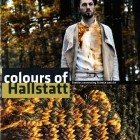-

The results of the Research Agenda 2008-2012 through a selection of expertises of the Cultural Heritage Agency of the Netherlands.
-
Expertise
 Reading modeshare
Reading modeshareWe can see objects due to their shape and colour. Colour is visible through light, the radiation of which, to a greater or lesser extent, is absorbed and reflected by surfaces with various pigments and dyes.

The RCE has important reference-collections of pigments and historic paints.
Colour is used to emphasize symbolism, status, mood, danger and signals and says much about cultures and their perception of their environment. Colour also provides information about the origin and history of objects.
Loss of colour
The greatest risk with the exhibition of light-sensitive objects is loss of colour. This was the subject of one of the earliest examples of scientific research for museums: the study of the effect of light on watercolours by Russell and Abney in 1888. The reason - fear of loss of colour - remains the driving force behind many studies in this area.
Colour research
Research at the RCE in which colour plays a leading role focuses on the chemical analysis of pigments and dyes found on paintings, drawings, photographs and textiles, amongst other materials. The results provide answers and solutions to various questions and problems: the working method of the artist, dating of objects and their stage of completion, reconstruction of the original state of an object and the enhancement of the story around it.
Colour knowledge
Research includes the study of pigment and dye properties, such as light sensitivity, wet resistance and susceptibility to air pollution and dust. This knowledge is used, for example, in guidelines for museum lighting, minimizing exhibition risks and developing cleaning methods for coloured surfaces. In addition, attention is paid to colour perception and colour loss and the extent to which colour change affects the valuation of the object.


















